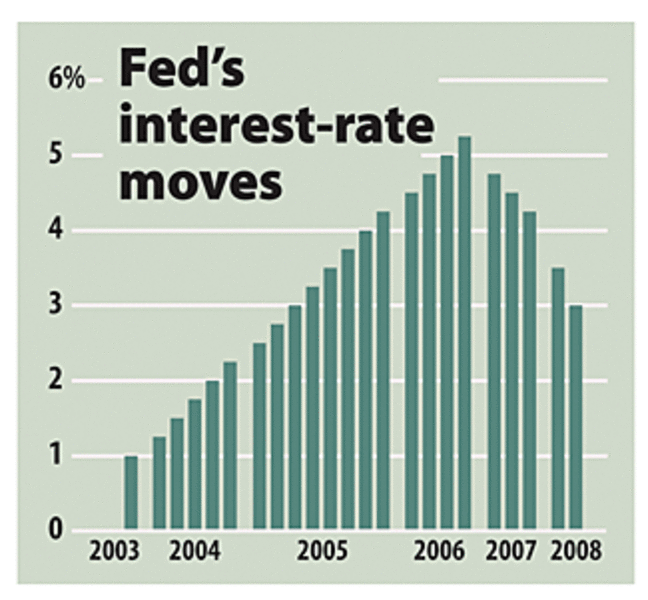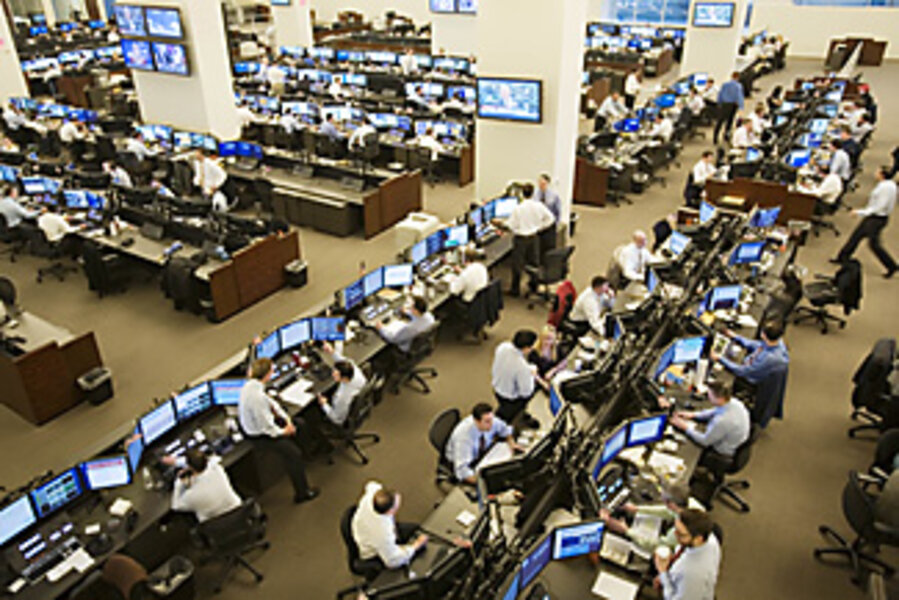Fed's main task: Save the banks
In moving with unusual speed to cut interest rates, officials at the Federal Reserve are aiming to prevent a nationwide recession, but they're also doing something more targeted: throwing a lifeline directly to the beleaguered banking industry.
The Fed says that it isn't trying to bail out anyone. Rather, its move is grounded partly in concern that banking troubles could deepen, choking off credit to the whole economy at a precarious time.
The pace of consumer spending stalled in December, according to government data released Thursday. America's businesses are also on edge, with slow job creation causing a rise in unemployment. In response, the central bank is moving to stimulate growth. But it is also trying to forestall a possible bank meltdown that would worsen the situation.
The interest-rate cuts could give financial firms some breathing room to absorb losses tied to home loans.
"This is more about Wall Street than Main Street," says Ken Goldstein, an economist at the Conference Board, a business-sponsored research group in New York. "We've got the monetary strategy we've got because financial markets are nervous."
The Fed pointed to this anxiety, and to the risk it poses, in announcing its latest moves. "Financial markets remain under considerable stress, and credit has tightened further for some businesses and households," the Federal Open Market Committee said in the statement accompanying the rate cut on Wednesday.
Citing "downside risks" to the economy, the statement again pointed to Wall Street, saying it "will continue to assess the effects of financial and other developments on economic prospects" in deciding future policy actions. The key point: Financial developments have an impact that extends beyond the geography of Manhattan or the paychecks of investment bankers – many of whom are going without million-dollar bonuses this year.
Deepest cuts since the '80s
Since September, the Fed has now cut its short-term interest rate, charged among banks for overnight loans, from 5.25 percent to 3 percent.
Much of that cut has happened just in recent days. On Wednesday, the Fed's policy committee voted to cut its short-term interest rate by half a percentage point, barely a week after an emergency rate cut of 0.75 percentage point.
A cut of that magnitude hasn't been seen since the 1980s, and these moves together signal a Fed now on high alert against a possible recession.
The Fed hopes that interest-rate cuts will help stimulate consumer and business spending, since lower rates make borrowing more attractive and saving less attractive.
The big picture also includes what central bankers call "risk management." Fed Chairman Ben Bernanke and his colleagues consider where the greatest risks to the economy lie – whether on the side of inflation (with too much monetary stimulus) or contraction (with too little money supply).
At certain times, they'll emphasize mitigating the biggest risk they see. Right now, that's the risk of an unhealthy banking system.
Wall Street, broadly defined to include banking and related industries, plays a vital role in supplying credit to consumers and businesses. If the flow of credit tightens more dramatically, the result could be a deep recession, rather than the mild slowdown for the US economy that many economists now predict in 2008.
Even in mild form, a recession could be hard on Main Street, with unemployment rising amid slack consumer demand. "There are three things that worry the average consumer or household," Mr. Goldstein says. "Their job, their job, and their job."
In Wall Street, signs of trouble
Most financial firms are weathering the storm. Yet signs of trouble abound:
•In a recently published analysis, economist Gary Shilling counts 210 US mortgage lenders that have closed, curbed operations, entered bankruptcy, or been acquired in fire-sale conditions since 2006.
•Policymakers are increasingly worried about companies specializing in insuring mortgage-related bonds against default. Insurer MBIA Inc. reported a quarterly loss of $2.3 billion Thursday.
•Problems for banks have spread beyond mortgage defaults to include rising delinquencies on car loans and credit cards, and expectations that corporate-bond defaults will rise as well.
Thomas Palley, a Washington economist, says that interest-rate cuts can help banks and financial firms in several ways. Lower rates allow banks to reap a higher profit on new loans, as the spread widens between their own borrowing costs and the rates they charge others.
Also, rate cuts tend to boost the price of financial assets such as bonds. By lowering the cost of mortgage loans, it could also help stabilize a slumping housing market that has saddled banks with record numbers of costly foreclosures.
In a recent post on his website, Mr. Palley calls the latest rate cuts "welfare for Wall Street." That doesn't mean the move is bad for Main Street. But he says America needs to consider how to avoid repeats of this situation, in which the banking industry goes through cycles of taking on excessive risks, and the whole economy suffers as a result. "We need a much deeper and more severe conversation" about bank regulation, he says.
Economists generally say lower interest rates are needed now, but may increase inflation down the road. That's a price the economy pays for "risk management."







